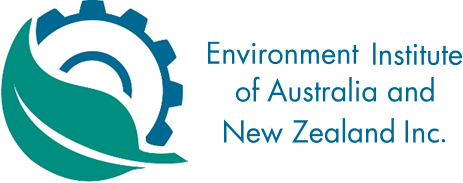-
Member Login
- Home
- About
- Institute Groups
- Australian Divisions
- New Zealand Chapter
- Special Interest Sections
- Communities of Practice
- Membership
- Events
- News & Publications
- Institute Programs
- Resources
- Jobs Board
- Contact Us
- Site Info
John Ottaway FEIANZ
John Ottaway FEIANZ
 Dr John Ottaway has been a member of EIANZ since 1987, and a Fellow since 1998.
Dr John Ottaway has been a member of EIANZ since 1987, and a Fellow since 1998.
After completing a BSc (Hons) at the University of Adelaide, John started his environmental career in January 1970, with three years’ work researching the population ecology of silver gulls in southeastern Australia, based on 16,500 seagulls, each uniquely identifiable while un-recaptured and free-living.
Awarded an Australian Commonwealth Government Postgraduate Scholarship for overseas studies, he then completed PhD studies at the University of Canterbury, New Zealand, on the population ecology of the intertidal anemone Actinia tenebrosa, living on rocky shores south of Kaikoura. In 1977, he returned to South Australia to teach undergraduate courses in marine ecology and ornithology, while continuing research on silver gulls and sea anemones.
Commencing in 1979, after being awarded a postdoctoral Queen Elizabeth II Fellowship in Marine Science, John then worked for two years on soft-substrates epibenthic community dynamics in St Vincents Gulf.
During 1981–1983, he was leader of an industry–funded small team, based at JCUNQ, studying tropical, soft-sediment marine epibenthic communities at Abbot Point (about 190 km southeast of Townsville).
In March 1984, John was appointed a Chief Environmental Officer in the WA Department of Conservation and Environment, heading major applied multidisciplinary marine ecological programs in the Dampier Archipelago, Cockburn Sound and Albany harbours, and setting up two new studies in the Perth northern metropolitan coastal waters relevant to a major new marine park (the first in WA), and construction of a major new boat harbour. Other investigations were on the likely impacts of an undersea crude oil and gas pipeline from North Rankin A to the Burrup Peninsula, the siting through State waters of an international telecommunications cable, treated wastewater effluent pipelines for offshore ocean discharges, ship groundings (Korean Star, Sanko Harvest), a ship foundering (Kirki), a new fishing boat harbour at Fremantle, and several marinas.
Concurrently, John was the WA lead officer for progressing national environmental policies developed under the auspices of Commonwealth agencies.
In 1988, John was assigned to the newly created Pollution Control Division as an inaugural Assistant Director. Over the next eight and a half years, he managed departmental teams responding to pollution impacts on soil, air, groundwater and surface water bodies, managing responses to noise complaints, and managing contaminated sites cleanups of a wide range of toxic chemicals including banned organochlorine pesticides and asbestos. He then had assignments to the WA EPA as Executive Officer, and on to Waste Management Division, regulating across WA the collections, transport, disposal, and/or treatment of municipal, commercial, industrial and medical wastes. He also had concurrent periods leading regulatory (forensic) investigations.
Other major assignments were: successfully leading the development of new WA waste legislation; working in China for the WA Government and then the Commonwealth Government; and, being the inaugural Director to set up the Cleanup and Recovery Project to remediate lead carbonate and nickel sulphide contamination in Esperance. In parallel to much of that, John had assignments as Executive Officer to the Waste Management Board, inaugural Principal Environmental Consultant to successive Directors General, and inaugural Executive Officer to the Waste Management Authority.
In 2009, John became a sole trader ESH consultant.
Currently, he undertakes occasional contract work for the Commonwealth Government and the WA State Government.
We acknowledge and value the rights and interests of Indigenous Peoples in the protection and management of environmental values through their involvement in decisions and processes, and the application of traditional Indigenous knowledge.

